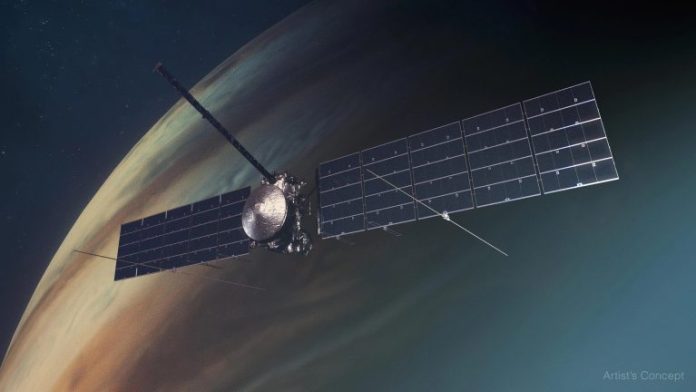NASA’s Europa Clipper probe rocketed from Florida to Jupiter’s icy moon to find out if conditions to sustain life existed there.
The launch aboard a powerful SpaceX Falcon Heavy rocket took place shortly after noon (16:00 GMT) on Monday, 14 October. The probe is expected to reach Jupiter’s moon Europa in five and a half years.
NASA later confirmed that it had successfully received a signal from the probe, with its massive solar panels, designed to capture the faint light reaching Jupiter, fully unfolded. The mission will allow the US space agency to discover new details about Europa, which NASA official Gina DiBraccio believes may harbour an ocean beneath its icy surface.
With Europa Clipper, we’re not searching for life on Europa, but we’re trying to see if this ocean world is habitable, and that means we’re looking for the water. We’re looking for energy sources, and we’re really looking for the chemistry there, so that we can understand what habitable environments might be throughout our whole universe.
The 30-metre-wide probe, with its solar panels fully extended, is the largest NASA has ever built for interplanetary exploration. Europa Clipper programme scientist Curt Niebur said the journey could reveal “a world that could be habitable today, right now.”
Europa has been known to exist since 1610, but the first close-up images were taken by the Voyager probes in 1979. The next probe to reach Jupiter’s icy moon was NASA’s Galileo in the 1990s, which found that the moon was likely to have an ocean.
Purpose of the mission
The mission will try to determine the structure and composition of Europa’s surface, its depth and even the salinity of the ocean. The goal is to see if the three ingredients necessary for life are present: water, energy and certain chemical compounds.
Bonnie Buratti, the mission’s deputy project scientist, explained that life could be found in the ocean in the form of primitive bacteria. However, the bacteria may be too deep to be detected by the Europa Clipper.
During its journey, the probe will cover 2.9 billion kilometres. It is expected to arrive in April 2030. The main mission will last another four years. Europa Clipper will make 49 flybys over the satellite, getting as close as 25 kilometres to its surface.
NASA says the $5.2bn mission over about a decade is justified by the importance of the data that will be collected. About 4,000 people worked on the project.
Europa Clipper will operate simultaneously with the European Space Agency’s (ESA) Juice probe, which will study two other moons of Jupiter, Ganymede and Callisto.
